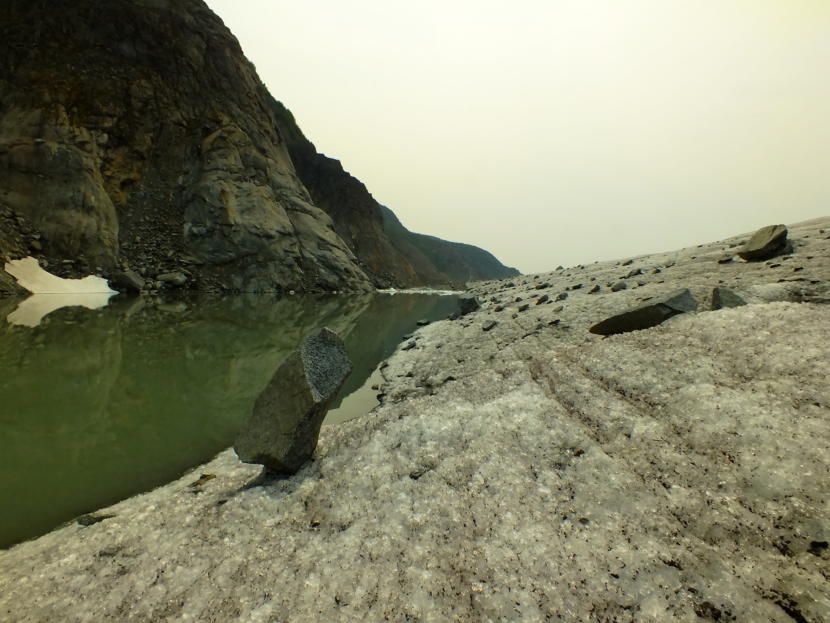
Alaska is experiencing an unusually hot summer and researchers across the state are tracking the effects. The University of Alaska system is known as a leader in climate change research — studying melting permafrost to shrinking glaciers.
But there’s growing uncertainty about the future of such projects with steep cuts to state funding.
One faculty member in Juneau is hoping he doesn’t have to relocate.
Eran Hood is a professor at the University of Alaska Southeast. He’s training the next wave of environmental scientists, and he’s helping the capital city track potential climate disasters.
He researches avalanches and glacial flooding events, among other things. Hood says all of the money for those types of projects is generated by him and his collaborators.
“I’ve brought in more funding to the university then the university has paid me in salary over the years,” Hood said.
That helps pay for things like travel logistics, lab analysis and research assistance.
But for nine months, when class is in session, Hood’s salary comes from the university. And right now, there are some big unknowns about potential cuts to programs and if enough funding will be available.
Gov. Mike Dunleavy vetoed $130 million dollars in University funding. The Alaska Legislature has yet to decide if it will restore any of that cut.
And Hood says that’s leaving a lot of researchers hanging in the balance. He thinks if the cuts are that deep a lot of faculty are going to leave the state.
“And when they leave the state that expertise goes with them,” Hood said.
And so could tens of millions of federal dollars for climate change research. That money isn’t necessarily tied to the university. Many of the projects belong to the faculty who applied for the federal grants.
So Hood says some expansive research projects — involving teams of people across the state — could unravel.
“We could leave a tremendous amount of federal research money on the table,” Hood said.
Earlier this week, university President Jim Johnsen addressed how the institution will weather these cuts and the potential loss of research funding.
He acknowledged eyes are on Alaska. The University of Alaska Fairbanks is known as a global leader in Arctic research, and climate change in the Arctic, Johnsen said, is an issue of national security.
Eran Hood, at the University of Alaska Southeast, says his work is also crucial for the state and the rest of the world.
Alaska glaciers are contributing to more sea level rise than any other mountain glaciers on Earth.
Despite these uncertain times, Hood says he isn’t ready to move his family.
“I still feel like I want to stay here,” Hood said. “I want to do research here. So I’m pretty committed to making that work.”
The University system is still trying to figure out if it will make a declaration, which would make it possible to more rapidly downsize and reduce staff.
In the meantime, Hood is spending his summer doing what he’s always done: Monitoring the changes in his backyard.
Editor’s note: This story has been updated to reflect the Alaska Legislature could choose to restore the University system funding. However, the deadline to override the Governor’s vetoes has passed.